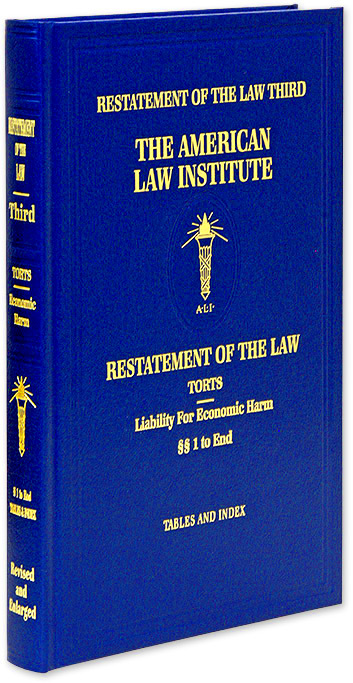Understanding the Restatement of the Law Third Trusts
The Restatement of the Law Third Trusts is a significant legal document that provides clarity and guidance on trust law in the United States. It serves as a reference for judges, lawyers, and scholars, summarizing the common law principles that govern trusts. This Restatement aims to simplify complex legal standards and enhance consistency across various jurisdictions. By doing so, it helps ensure that everyone involved in trust matters—trustees, beneficiaries, and legal professionals—has a clearer understanding of their rights and obligations.
Purpose of the Restatement of the Law Third Trusts
The primary purpose of the Restatement of the Law Third Trusts is to:
- Simplify Trust Law: It breaks down complicated legal jargon, making it accessible to non-lawyers.
- Provide Guidance: It offers practical guidance to judges and practitioners when making decisions related to trusts.
- Promote Consistency: By outlining common principles, it encourages uniform application of trust law across different states.
- Support Education: It serves as an educational tool for law students and new practitioners entering the field.
This Restatement reflects modern practices and changes in society, ensuring that trust law evolves to meet current needs while still respecting established legal traditions.
Key Principles of Trust Law
Understanding trust law requires grasping several key principles. Here are some of the fundamental concepts:
- Trust Creation: A trust is created when a grantor transfers property to a trustee for the benefit of a beneficiary.
- Fiduciary Duty: Trustees have a legal obligation to act in the best interests of the beneficiaries, known as the fiduciary duty. This includes:
- Acting loyally and in good faith.
- Providing full disclosure of relevant information.
- Avoiding conflicts of interest.
- Beneficiary Rights: Beneficiaries have the right to receive information about the trust and its administration. They can enforce their rights if the trustee fails to fulfill their duties.
- Modification and Termination: Trusts can be modified or terminated under certain conditions, typically with the consent of all parties involved or by court order.
These principles guide the operation of trusts and help ensure fair treatment of all parties involved. By understanding these key concepts, individuals can better navigate the complexities of trust law.
Differences Between the Restatement and Previous Versions
The Restatement of the Law Third Trusts brings several important changes compared to earlier versions. While the previous Restatements laid the groundwork for trust law, this latest version refines and modernizes many concepts. Here are some key differences:
- Broader Scope: The Third Restatement covers more situations and types of trusts, including newer forms like discretionary trusts and special needs trusts.
- Focus on Practicality: It emphasizes practical application, helping practitioners navigate real-world scenarios more effectively.
- Enhanced Clarity: Legal language has been simplified, making it easier for non-lawyers to understand the principles governing trusts.
- Greater Flexibility: The Third Restatement recognizes the evolving nature of trust law, allowing for adaptations to better meet the needs of modern society.
- Updated Fiduciary Standards: It provides clearer guidelines on the duties of trustees, emphasizing the importance of transparency and accountability.
These differences reflect a commitment to making trust law more accessible and relevant in today’s legal landscape, ensuring that it serves the needs of all parties involved.
Importance of Uniformity in Trust Law
Uniformity in trust law is crucial for several reasons. When trust law is consistent across jurisdictions, it benefits everyone involved—trustees, beneficiaries, and legal professionals alike. Here are some key points highlighting its importance:
- Legal Predictability: Uniform laws create a predictable legal environment, allowing individuals to plan their estates with confidence.
- Reduced Confusion: Consistent application of trust law minimizes confusion for trustees and beneficiaries, especially those dealing with trusts in multiple states.
- Improved Efficiency: Uniformity streamlines legal proceedings, reducing the time and resources needed to resolve disputes.
- Encouragement of Best Practices: By establishing common standards, it promotes best practices among trustees and enhances the overall administration of trusts.
Overall, uniformity in trust law strengthens the legal framework and ensures that all parties have a clear understanding of their rights and responsibilities.
Impact on Trustees and Beneficiaries
The Restatement of the Law Third Trusts significantly impacts both trustees and beneficiaries. Understanding these effects can help all parties navigate trust relationships more effectively. Here are some important points to consider:
- Trustee Responsibilities: Trustees are held to higher standards, with clearer guidelines on their fiduciary duties. This includes:
- Acting in the best interest of beneficiaries.
- Maintaining transparent communication about trust activities.
- Providing timely reports on trust assets and performance.
- Beneficiary Rights: Beneficiaries enjoy greater rights under the Third Restatement. They can:
- Request information about the trust’s financial status.
- Enforce their rights if the trustee fails to act appropriately.
- Challenge trustee decisions that are not in line with trust purposes.
- Improved Relationships: With clearer expectations, the Restatement helps foster better communication and cooperation between trustees and beneficiaries, which can lead to more amicable relationships.
In summary, the Third Restatement aims to balance the duties of trustees with the rights of beneficiaries, ensuring fair and efficient trust management.
How Courts Use the Restatement
Courts play a crucial role in interpreting and applying the Restatement of the Law Third Trusts. They rely on this document to make informed decisions in trust-related cases. Here’s how courts typically use the Restatement:
- Reference for Legal Standards: Courts refer to the Restatement to understand the established legal principles that apply to trust law. This helps them determine how to handle specific cases.
- Guidance in Case Law: When faced with novel situations, judges look to the Restatement for guidance, ensuring that their rulings align with the latest interpretations of trust law.
- Support for Judicial Decisions: Courts often cite the Restatement in their opinions, providing a solid foundation for their reasoning and justifications in rulings.
- Influencing Future Cases: As judges interpret the Restatement, their decisions can influence how future cases are handled, creating a ripple effect throughout the legal system.
- Promoting Consistency: By using a uniform standard like the Restatement, courts help create consistency in trust law across different jurisdictions.
In this way, the Restatement serves as a vital resource for the judicial system, enhancing the clarity and reliability of trust law interpretations.
Future Developments in Trust Law
The landscape of trust law is constantly evolving, and several trends may shape its future. As society changes, so do the needs and complexities of trust arrangements. Here are some potential developments to watch:
- Digital Assets: As more people hold digital assets, there may be new guidelines for how these assets are managed within trusts. Courts will need to address questions about digital ownership and access.
- Modern Family Structures: With diverse family structures on the rise, trust law may adapt to better accommodate blended families, same-sex couples, and other non-traditional arrangements.
- Environmental Considerations: Trusts may increasingly incorporate environmental sustainability goals, with specific provisions aimed at protecting natural resources and promoting eco-friendly practices.
- Technology in Trust Administration: Advancements in technology could lead to more efficient trust administration processes, including the use of blockchain for transparency and security.
- Legal Education and Practice: Ongoing legal education will be essential for practitioners to stay updated on these changes and how they affect trust law.
As these trends develop, the Restatement of the Law Third Trusts may continue to evolve, ensuring it remains relevant in addressing contemporary trust issues.
FAQ
Here are some frequently asked questions about the Restatement of the Law Third Trusts:
- What is the Restatement of the Law Third Trusts? It is a comprehensive guide that summarizes the principles of trust law in the United States, providing clarity and guidance to legal professionals.
- Who uses the Restatement? Judges, lawyers, and law scholars use the Restatement to understand trust law and apply its principles in legal cases.
- How does the Restatement affect trust management? It clarifies the roles and responsibilities of trustees and beneficiaries, promoting better communication and understanding.
- Are there any limitations to the Restatement? While it provides valuable guidance, it is not legally binding. Courts interpret its principles in the context of individual cases.
- Can the Restatement change over time? Yes, the Restatement can be revised to reflect new developments in trust law and society’s changing needs.
If you have more questions, feel free to reach out to a legal professional for tailored advice.
Conclusion
The Restatement of the Law Third Trusts plays a vital role in shaping the understanding and application of trust law in the United States. By offering clear guidelines and promoting uniformity, it helps trustees and beneficiaries navigate their rights and responsibilities more effectively. As trust law continues to evolve, the Restatement will likely adapt to address emerging issues, ensuring its relevance in modern society. Whether you are a legal professional, trustee, or beneficiary, staying informed about the principles outlined in the Restatement is essential for effective trust management and compliance with current legal standards.


